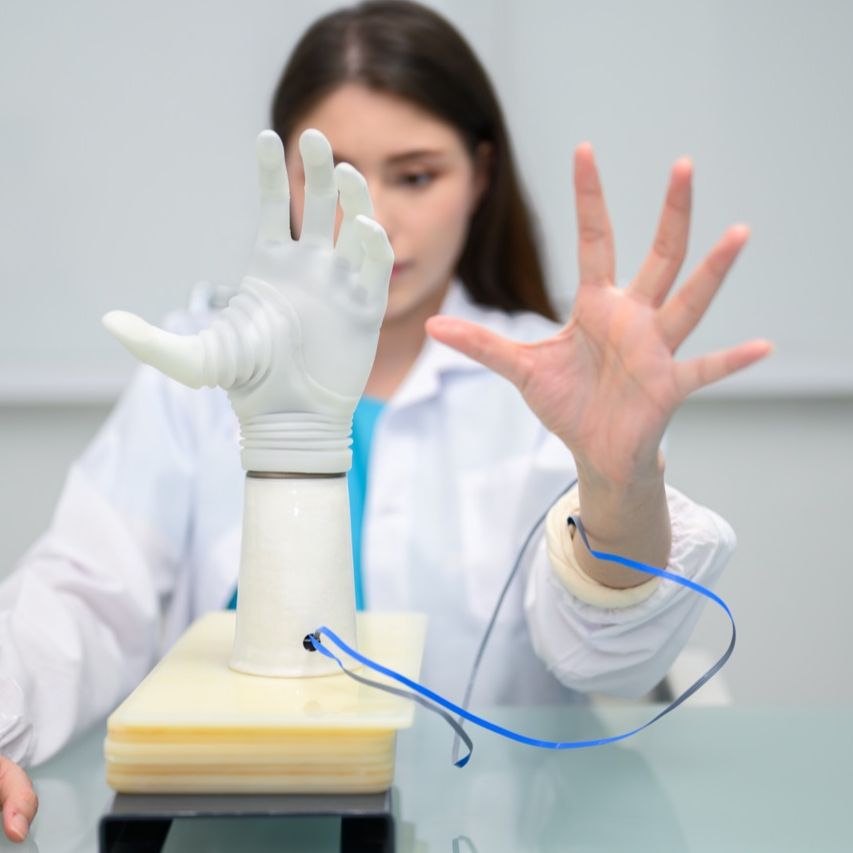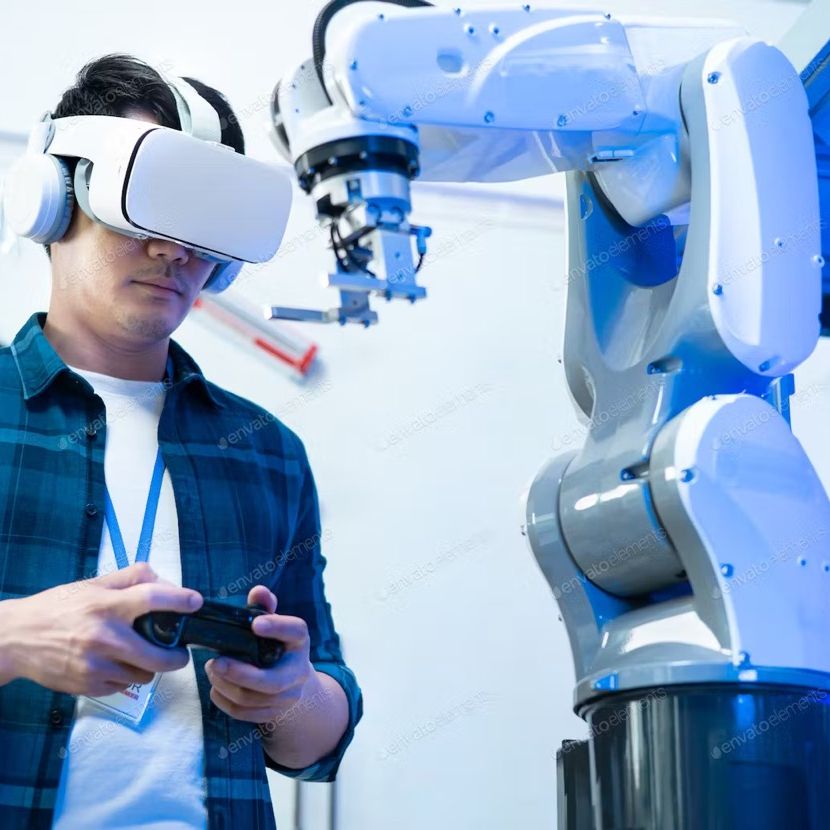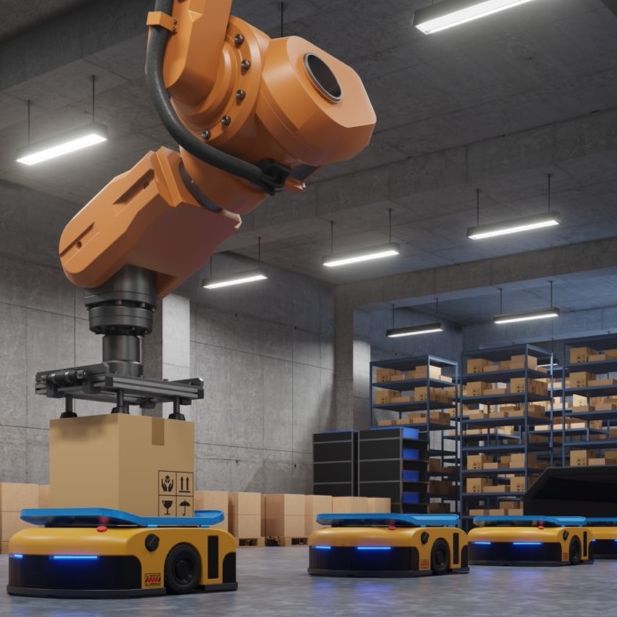Forge the Future:
Master the Essence of Modern Robotics
Elevate your engineering journey with state-of-the-art robotics insights and real-world projects.
Join us and unlock a world of innovation!
GET EDUCATED
INTRODUCING
Modern Robotics:
Mechanics, Planning, and Control
Explore the critical concepts in contemporary robotics through this rigorous program that offers deep insights into spatial motion, dynamics of rigid bodies, and robot motion planning and control. Perfect for those with a basic engineering background and a desire to delve into robot programming using modern screw theory and the product of exponentials formula.

Today, global education is more accessible than ever. The vast resources and efforts of the world's top universities are now at the fingertips of anyone eager to learn. You're no longer confined by your region or resources. Studying with global education leaders is a reality for anyone aiming for excellence.
Northwestern University is a private research and teaching university with campuses in Evanston and Chicago, Illinois, and Doha, Qatar. Northwestern combines innovative teaching and pioneering research in a highly collaborative environment that transcends traditional academic boundaries.


Course Developer and Instructor
Kevin Lynch, Professor at Northwestern University
Kevin Lynch is Professor and Chair of the Mechanical Engineering Department at Northwestern University. He is a member of the Neuroscience and Robotics Lab (nxr.northwestern.edu) and the Northwestern Institute on Complex Systems (nico.northwestern.edu). His research focuses on dynamics, motion planning, and control for robot manipulation and locomotion; self-organizing multi-agent systems; and functional electrical stimulation for restoration of human function. Dr. Lynch is Editor-in-Chief of the IEEE International Conference on Robotics and Automation and incoming Editor-in-Chief of the IEEE Transactions on Robotics. He is co-author of the textbooks "Principles of Robot Motion" (MIT Press, 2005), "Embedded Computing and Mechatronics" (Elsevier, 2015, http://nu32.org), and "Modern Robotics: Mechanics, Planning, and Control" (Cambridge University Press, 2017, http://modernrobotics.org). He is an IEEE fellow and the recipient of Northwestern's Professorship of Teaching Excellence and the Northwestern Teacher of the Year award in engineering.
COURSE STRUCTURE
You will build on a library of robotics software in the language of your choice (among Python, Mathematica, and MATLAB) and use the free cross-platform robot simulator V-REP, which allows you to work with state-of-the-art robots in the comfort of your own home and with zero financial investment.


MODULE 1
Foundations of Robot Motion
You will learn fundamental material regarding robot configurations, for both serial robot mechanisms and robots with closed chains. You will learn about configuration space (C-space), degrees of freedom, C-space topology, implicit and explicit representations of configurations, and holonomic and nonholonomic constraints. You will also learn how to represent spatial velocities and forces as twists and wrenches. This material is at the core of the study of anything that moves (e.g., robots).
-
Configuration space and degrees of freedom of rigid bodies and robots.
-
Configuration space topology and representation; configuration and velocity constraints; task space and workspace.
- Rigid-body motions, rotation matrices, angular velocities, and exponential coordinates of rotation.
- Homogeneous transformation matrices, twists, screws, exponential coordinates of rigid-body motion, and wrenches.

MODULE 2
Robot Kinematics
You will learn to solve the forward kinematics (calculating the configuration of the "hand" of the robot based on the joint values) using the product-of-exponentials formula. Your efforts in Course 1 pay off handsomely, as forward kinematics is a breeze with the tools you've learned. This is followed by velocity kinematics and statics relating joint velocities and forces/torques to end-effector twists and wrenches, inverse kinematics (calculating joint values that achieve a desired "hand" configuration), and kinematics of robots with closed chains.
-
Product of exponentials formula for forward kinematics in the space frame and the end-effector frame.
-
Velocity kinematics using the space Jacobian and body Jacobian, statics of open chains, singularities, and manipulability.
-
Analytical and numerical inverse kinematics.
-
Forward kinematics, inverse kinematics, velocity kinematics, and statics of closed chains.

MODULE 3
Robot Dynamics
You will learn efficient numerical algorithms for forward dynamics (calculating the robot's acceleration given its configuration, velocity, and joint forces and torques) and inverse dynamics (calculating the required joint forces and torques given the robot's configuration, velocity, and acceleration). The former is useful for simulation, and the latter is useful for robot control. You will also learn how to plan robot trajectories subject to dynamic constraints.
-
Lagrangian formulation of dynamics, centripetal and Coriolis forces, robot mass matrix, dynamics of a rigid body, and Newton-Euler inverse dynamics for an open-chain robot.
-
Forward dynamics of an open chain, task-space dynamics, constrained dynamics, and practical effects due to gearing and friction.
-
Point-to-point "straight-line" trajectories and polynomial trajectories passing through via points.
- Time-optimal motions along a specified path subject to robot dynamics and actuator limits.

MODUL 4
Robot Motion Planning and Control
You will learn key concepts of robot motion generation: planning a motion for a robot in the presence of obstacles, and real-time feedback control to track the planned motion.
-
C-space obstacles, graphs and trees, and A* graph search.
-
Motion planning on a discretized C-space grid, randomized sampling-based planners, virtual potential fields, and nonlinear optimization.
-
First- and second-order linear error dynamics, stability of a feedback control system, and motion control of robots when the output of the controller commands joint velocities.
- Motion control of robots when the output of the controller commands joint torques, force control, and hybrid motion-force control.

MODULE 5
Robot Manipulation and Wheeled Mobile Robots
We delve into advanced topics which covers the modeling of kinematics and forces between rigid bodies in contact, and applies the modeling to analysis and planning of robot grasping and other manipulation tasks. You will learn modeling, motion planning, feedback control of omnidirectional and nonholonomic wheeled mobile robots, and concludes by addressing control of mobile manipulators consisting of a wheeled mobile base and a robot arm.
-
Kinematics of contact, contact types (rolling, sliding, and breaking), graphical methods for representing kinematic constraints in the plane, and form-closure grasping (complete kinematic constraint).
-
Coulomb friction, friction cones, graphical methods for representing forces and torques in the plane, force closure grasping, and examples of manipulation other than grasping.
-
Kinematic models of omnidirectional and nonholonomic wheeled mobile robots.
- Controllability, motion planning, and feedback control of nonholonomic wheeled mobile robots; odometry for wheeled mobile robots; and mobile manipulation.

MODULE 6
Capstone Project, Mobile Manipulation
Beginning from the Modern Robotics software library provided to you (written in Python, Mathematica, and MATLAB), and software you have written for previous courses, you will develop software to plan and control the motion of a mobile manipulator to perform a pick and place task. You will test your software on the KUKA youBot, a mobile manipulator consisting of an omnidirectional mecanum-wheel mobile base, a 5-joint robot arm, and a gripper. The state-of-the-art, cross-platform V-REP robot simulator will be used to simulate the task.
-
Odometry for wheeled mobile robots and its use in a kinematic simulator for the youBot omnidirectional mobile robot with four mecanum wheels.
-
Generating a reference trajectory in SE(3) for the end-effector of a mobile manipulator to achieve a pick-and-place task.
-
Feedforward control of the end-effector of a mobile manipulator to drive the end-effector along a reference trajectory.
- Feedforward-plus-feedback control of the end-effector of a mobile manipulator to stabilize a reference trajectory for the end-effector.
In today's fast-paced industrial world, automation is essential for competitive edge. As businesses seek to optimize and innovate, experts in automation and robotics have become invaluable, transforming companies to meet tomorrow's challenges today.

Industry
Engineers and technicians working on automated assembly lines where robots are used for tasks like welding, painting, and more. Professionals designing and using robotic systems for production automation.

Medical
Doctors and engineers utilizing robotic systems for precise surgical interventions. Rehabilitation professionals using robots to assist patients in regaining bodily functions.

Agriculture
Farmers and agronomists employing robotic equipment for precise fertilizer application, harvesting, and more.

Research & Development
Scientists working on cutting-edge technologies in robotics. Professionals developing new robotic systems for commercial applications.

Logistics a Delivery
Logisticians using robotic systems to automate warehouse tasks like lifting and moving goods. Companies exploring the use of robotic systems for goods delivery.

Tech Start-ups
Founders and engineers developing new robotic products and solutions.
Course
1950€
including VAT
GET STARTED TODAY!
Modern Robotics:
Mechanics, Planning, and Control
Learning format
The courses are offered in a flexible, online environment and conclude with a certificate of completion that speaks to your competencies in a contemporary and evolving marketplace.
The total volume of training: 180 academic hours, which consist of 180 hours of independent work (including work on homework).
Language of instruction: English (translation into Russian is attached)
The course must be completed within three months.
Payment by invoice
Kindly provide your billing information in the comment field during registration. An invoice will be issued within 3 business days after registration for the training.
Before registering for the training, we kindly ask you to familiarize yourself with the curriculum of and terms of the training organization.
By registering for the course, you acknowledge and agree to the terms of use regarding the personal data provided to the Entrepreneurship Center (Ettevõtluskeskus OÜ).
In today's rapidly evolving technological landscape, stay a step ahead with Northwestern University's leading robotics course. Grasp the mechanics that power the modern world.
Dive in now and shape the future with us!

"I really enjoyed this course. It is a complex course, I had to put some concentration and dedication to solve some exercises. I love courses that require thinking to solve challenging problems."
- David B, June 2022

"The course provides a clear understanding of degrees of freedom, configuration spaces and the methods used to represent the position and orientation of the robot. The book provided with the course is excellent material on the topics covered in lectures. Providing an answer key to the end of the chapter exercise problems will be helpful."
- Sudheer R T, May 2022

"I thought I knew about rigid body motion. Then, I took this course and learned so much more! The online material along with the book is packed full of information, well explained. I highly recommend this course."